Today’s Current Affairs: 5th July 2025 for UPSC IAS exams, State PSC exams, SSC CGL, State SSC, RRB, Railways, Banking Exam & IBPS, etc
Table of Contents
Status of Youth in Agrifood Systems Report:
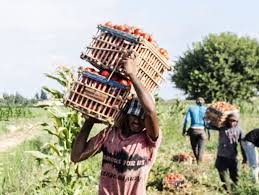
The FAO released the “Status of Youth in Agrifood Systems” report highlighting that empowering youth in agriculture can boost global GDP by 1.4% and tackle rising unemployment and food insecurity.
Status of Youth in Agrifood Systems Report:
- Youth Employment Decline in Agriculture: Share of working youth in agrifood systems fell from 54% (2005) to 44%, despite high dependence in low-income countries.
- Rising NEET Youth: Over 20% of global youth (aged 15–24) are not in employment, education, or training; women are twice as likely to be affected.
- Massive GDP Potential: Eliminating youth NEET status, especially among 20–24-year-olds, could raise global GDP by 1.4% (~$1.5 trillion) — nearly 45% of it via agrifood systems.
- Urban-Rural Divide: 54% of youth now live in urban areas; rural youth form only 5% in industrial agrifood systems — signalling future labour shortages in agriculture.
- Vulnerability to Climate Change: Around 395 million rural youth live in areas likely to face declining agricultural productivity due to extreme weather and climate stress.
- Food Insecurity Rising Among Youth: Global food insecurity among youth has increased from 16.7% to 24.4% (2014–2023), especially in Africa and crisis-affected regions.
C-FLOOD App:
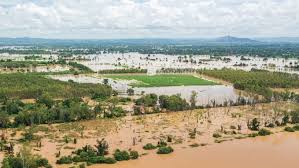
Union Jal Shakti Minister inaugurated C-FLOOD, India’s first unified web-based flood inundation forecasting platform.C-FLOOD is a web-based, real-time flood forecasting system that provides two-day advance inundation forecasts through flood maps and water level predictions.
- Developed By Centre for Development of Advanced Computing (C-DAC), Pune
- Objective: To provide an integrated, high-resolution flood forecasting tool for early warning, disaster risk reduction, and local-level planning.
- Key Features:
- 2-Day Forecasts at Village Level: Delivers localized flood maps and water levels down to the gram panchayat level.
- Hydrodynamic Modelling: Uses advanced 2-D simulations powered by High Performance Computing (HPC) under NSM.
- Multi-Basin Coverage: Currently covers Mahanadi, Godavari, and Tapi basins, with more to be added.
- Real-Time Data Integration: Pulls forecast outputs from national and regional models into a unified decision-support portal.
- Disaster Portal Integration: Designed for integration with the National Disaster Management Emergency Response Portal (NDEM).
Reserve Bank of India (Pre-payment Charges on Loans) Directions, 2025:
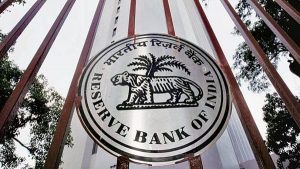
The RBI recently announced Reserve Bank of India (Pre-payment Charges on Loans) Directions, 2025, prohibiting banks and other regulated lenders from charging prepayment penalties on floating-rate loans availed by individuals for non-business purposes.
- It prohibited banks and other regulated lenders from charging prepayment penalties on floating-rate loans availed by individuals for non-business purposes.
- It benefits borrowers of home loans and other floating-rate loans, allowing them to repay loans ahead of schedule without additional fees.
- These new rules will be enforced on all loans which are sanctioned or renewed on or after January 1, 2026.
- The directive will apply to commercial banks and regulated entities (REs) such as NBFCs, excluding specific banks like Small Finance Banks and Regional Rural Banks unless they issue loans up to Rs 50 lakh.
- The exemption applies regardless of whether the loan is repaid fully or partially, the source of funds, or the presence of co-obligants.
- It also includes dual and special rate loans if they are on a floating rate at the time of repayment.
- No minimum lock-in period is required.
- For loans not covered under this rule, lenders must disclose any prepayment charges in the sanction letter, loan agreement, and Key Facts Statement.
- Should a bank fail to include this information, it cannot levy any prepayment charge.
Asteroid Terrestrial-impact Last Alert System:
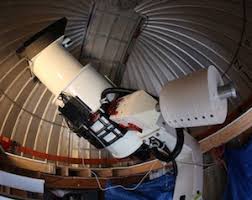
A comet, officially designated 3I/ATLAS, originating from outside our solar system has been recently spotted by the Asteroid Terrestrial-impact Last Alert System (ATLAS) in Chile.
- Asteroid Terrestrial-impact Last Alert System (ATLAS) is an asteroid impact early warning system developed by the University of Hawaii and funded by NASA.
- It consists of four telescopes (2 in Hawaii, 1 in Chile, 1 in South Africa), which automatically scan the whole sky several times every night looking for moving objects.
- Although the ATLAS system is also used to identify dwarf planets, supernova explosions, and life exposure remanence from a star being absorbed by a supermassive black hole in a distant galaxy, the main purpose of this project is to search for large “killer asteroids” that may have a tremendous impact on life on earth.
- ATLAS will provide a warning time depending on the size of the asteroid — larger asteroids can be detected further from Earth.
- ATLAS will see a small (~20 meter) asteroid several days out, and a 100 meter asteroid several weeks out.
- The system is specially designed to detect objects that approach very close to Earth – closer than the distance to the Moon, about 240,000 miles or 384,000 kilometers away.
Mount Shinmoedake:
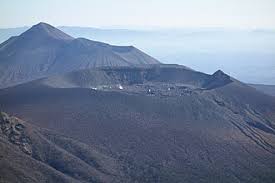
Japan’s Mount Shinmoedake, a volcano in the Kirishima mountain range on Kyushu Island, erupted recently, sending a towering ash plume into the sky.
- Mount Shinmoedake is an active stratovolcano located on Kyushu Island, Japan, within the Kirishima mountain range.
- It rises 1420.8 meters above sea level as part of the volcanic complex in Kagoshima Prefecture, displaying frequent eruption patterns and geological formations.
- Recorded eruptions of Shinmoedake started in 1716.
- Since then there have been eruptions scattered across all the years to the present day.
- It gained international fame as one of the filming locations for the 1967 James Bond movie “You Only Live Twice”.
- Stratovolcano is a tall, steep, and cone-shaped type of volcano.
- Unlike flat shield volcanoes, they have higher peaks.
- They are typically found above subduction zones, and they are often part of large volcanically active regions, such as the Ring of Fire that frames much of the Pacific Ocean.
- They are usually about half-half lava and pyroclastic material, and the layering of these products gives them their other common name of composite volcanoes.
- At the peak, stratovolcanoes usually have a small crater. The crater may be filled with water or ice, or it may contain a volcanic dome during a period of relative inactivity.
- Stratovolcanoes comprise the largest percentage (~60%) of the Earth’s individual volcanoes, and most are characterized by eruptions of andesite and dacite, lavas that are cooler and more viscous than basalt.
- These more viscous lavas allow gas pressures to build up to high levels. Therefore, these volcanoes often suffer explosive eruptions.
Alaknanda River:
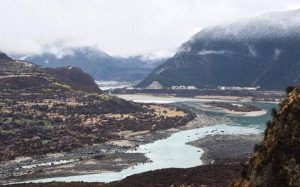
Heavy rains in Rudraprayag, Uttarakhand have triggered a surge in the water level of the Alaknanda River, creating a flood-like situation in the region.
- Alaknanda River is a Himalayan river in the state of Uttarakhand.
- It is one of the two main headstreams of the Ganges River, the other being the Bhagirathi River.
- It originates from the meltwaters of the Satopanth and Bhagirath Kharak glaciers in the Garhwal Himalayas of Uttarakhand.
- The river is joined by many tributaries in Uttarakhand.
- Five of the tributaries are considered major, and their points of confluence are also worshipped. The five holy confluences in the Garhwal Himalayas are also known as Panch Prayag.
- At the time of the formation of Ganga, Alaknanda’s contribution to the flow is much larger than that of Bhagirathi.
- From its source till its union with Bhagirathi, Alaknanda travels for 190 km (approx.).
- Along the banks of the Alaknanda are numerous important pilgrimage sites such as Badrinath, Hemkund Sahib, and Joshimath.
- The Alaknanda River valley is a significant part of the Char Dham Yatra, a pilgrimage circuit that encompasses four sacred sites—Badrinath, Kedarnath, Gangotri, and Yamunotri.
- There are several hydel projects in the basin, which include the Alaknanda (Badrinath), Lata Tapovan, Devsari Dam, Nandprayag Langasu, and Vishnugad Pipalkoti, to name a few.
Girmitiyas:
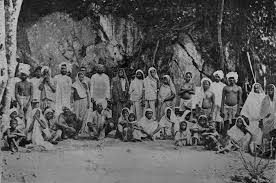
The Prime Minister recently said the descendants of Girmitiyas are no longer defined by struggle but by their “success, service, and values”.
- “Girmitiyas” were Indian indentured labourers who left India in the mid to late 19th century to work in British colonies, where many eventually settled.
- The word ‘girmitiya’ is etymologically derived from ‘girmit’, meaning ‘agreement’.
Indians then pronounced ‘agreement’ as ‘girmit’, so indentured labourers who were transported to work in places like Fiji and Mauritius, became known as ‘girmitiyas’. - However, the agreements weren’t all that fair.
- Indian labourers signed indentureship contracts with the British in hopes of higher wages and better employment opportunities.
- However, they made long treacherous journeys on old slave ships and upon reaching foreign lands, were made to live in slave barracks, were paid very little, and did not have access to proper legal frameworks under which they could get grievances redressed.
- Though girmitiyas were not technically slaves in the eyes of the law, they were subjected to a practice known as “blackbirding”, which involved deceiving or tricking people to work as slaves or poorly paid labourers in countries far away from their native land.
- Despite the unfortunate history of girmitiyas, their descendants have prospered in their respective countries, some having held “high-level” government positions and others having achieved success in business and arts.
Bukkapatna Chinkara Wildlife Sanctuary:

300 acres of encroached forest land was cleared in Bukkapatna Chinkara Wildlife Sanctuary.
- Bukkapatna Chinkara Wildlife Sanctuary is located in Tumakuru district of
- This protected area was declared as a sanctuary in 2019 and is dedicated for protection and conservation of the Indian Gazelle which are also known as Chinkaras.
- It is the second Chinkara (Gazelle bennetti) sanctuary in Karnataka after notifying a similar sanctuary at Yadahalli in Bagalkot district of North Karnataka in 2016.
- This is a rich habitat for various species inhabiting the wood savannahs – where a lot of grasses grow and are sparsely interspersed with native tree species.
- Other than Chinkaras, four horned antelopes, black bucks, sloth bears, leopards and other species inhabit this sanctuary.
- The main trees found in the area are Hardwickia binata (Anjan), P. emblica of Phyllanthaceae family (Amla), Boswellia Serrata (Shallaki), Tamarindus Indica (Imli), Pterocarpus Marsupium (Bijaka), Anogeissus latifolia (Dhaura), Shoerea talura and Terminalia tementose.
Chautal:
Prime Minister of India shared a video of a Bhojpuri Chautal performance during his visit to Port of Spain, Trinidad & Tobago, highlighting the cultural connection between India and the Indian diaspora.Chautal (also spelled Chowtal or Chartal) is a traditional 12-beat rhythmic cycle (tāl) used in Indian classical music, especially associated with the dhrupad style and pakhawaj. Chautal originated in North Indian classical traditions, particularly within the dhrupad The name Chautal means “four claps,” referring to the tala’s vibhag (division) structure.
Alluri Sitarama Raju:
Union Defence Minister, at the 128th birth anniversary celebrations of Alluri Sitarama Raju, praised his contributions to India’s freedom struggle and reaffirmed the government’s goal to eliminate Maoist insurgency by August 2026.Alluri Sitarama Raju was a fearless revolutionary and freedom fighter known for leading a tribal uprising against British colonial rule. Though not a tribal himself, he is revered for defending tribal rights and lives. He was born on 4 July 1897 in Mogallu village, near Bhimavaram in present-day Andhra Pradesh, and operated mainly in the Eastern Ghats’ Agency areas of Andhra Pradesh.
Variable Rate Reverse Repo (VRRR):
The Reserve Bank of India (RBI) conducted a ₹1 lakh crore 7-day Variable Rate Reverse Repo (VRRR) auction to manage surplus liquidity, which had peaked at ₹3.75 lakh crore. The Variable Rate Reverse Repo (VRRR) is a monetary policy tool used by the RBI to absorb excess liquidity from the banking system for a fixed duration, with the interest rate determined through auction rather than being fixed. It allows banks to lend funds to the RBI for a period longer than one day typically 7, 14, or 28 days in exchange for interest. Announced By the Reserve Bank of India (RBI) as part of its liquidity management framework.Objective is to manage surplus liquidity in the financial system. To fine-tune short-term interest rates and strengthen the monetary transmission mechanism. To provide a market-driven interest rate environment in short-term lending between banks and the central bank.
WHO 3 by 35 Initiative:
The World Health Organization (WHO) has launched the 3 by 35 Initiative, aiming to reduce harmful product consumption and generate sustainable public revenue through targeted health taxes.A global initiative to increase the real prices of tobacco, alcohol, and sugary drinks by at least 50% by 2035 through higher taxes. Launched By: The World Health Organization (WHO), in collaboration with global development partners, civil society, and governments. Objective is to reduce consumption of harmful products, improve public health, and mobilize US$ 1 trillion in additional public revenue by 2035, thereby supporting the Sustainable Development Goals (SDGs).




